Share Knowledge For Rubber Conveyor Belt
Conveyor belt used for material transportation in mining enterprises. Rubber conveyor belt has the characteristics of tropical belt, wear belt, burning belt, oil belt, alkali belt, alkali belt, tropical belt, cold belt and so on. Mainly used for the mining, metallurgy, iron and steel, coal, hydropower, building materials, chemical industry, grain and other enterprises of solid material transportation. Table 1 Reference value for cold seamless connection of multilayer rubber delivery tape This size is measured and crossed only at one end of the tape.
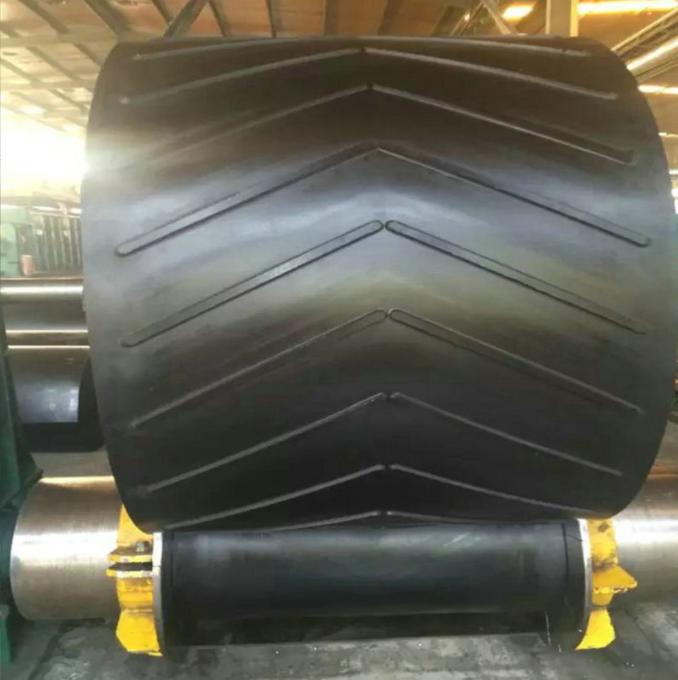
rubber conveyor belt
Rubber conveyor belt is divided into many specifications and models according to the different use environment and requirements: 1. According to the size of the transportation volume, it is divided into: B400 B500 B600 B650 B800 B1000 B1200 B1400 B1600 B1800 B2000 B2200 and other common models (B represents the width, unit in mm).2. According to the different use environment, it is divided into rubber conveyor belt and including (ordinary type, heat resistance type, refractory type, burning resistance type, acid and alkali resistant type, oil resistance type), heat resistance conveyor belt, cold resistance conveyor belt, acid and alkali resistant conveyor belt, oil resistance conveyor belt, food conveyor belt and other models. The minimum thickness of cover tape on ordinary conveyor belt and food conveyor belt is 3.0mm and 1.5mm; the minimum thickness of heat resistant, cold resistant, acid resistant and oil resistant conveyor belt is 4.5mm, and the minimum cover tape is 2.0mm. According to the specific circumstances of the environment can be increased by 1.5mm.3. According to the tensile strength of rubber conveyor belt is divided into ordinary conveyor belt and strong conveyor belt. The powerful type of canvas rubber conveyor belt is divided into nylon rubber conveyor belt (NN conveyor belt) and polyester rubber conveyor belt (EP conveyor belt). The strong layer of the strong rubber conveyor belt is polyester canvas (EP), which is specifically divided into EP100, EP150, EP200, EP250, EP300, EP350, EP400, etc. Also can be nylon canvas (NN), can be divided into NN100, NN150, NN200, NN250, NN300, NN350, NN400, NN450, NN500 type, etc.
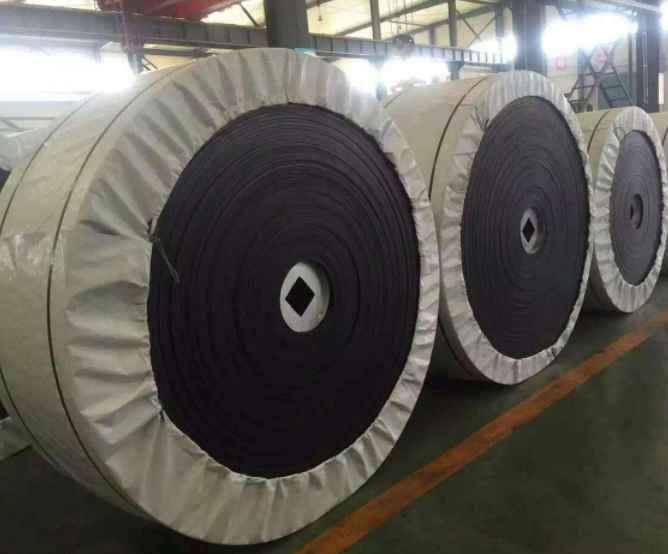
Manufacturing process of rubber conveyor belt:
The good conveyor belt manufacturer ,mix has a mixing and segmented mixing two processes, the high glue content, natural rubber and a small amount of synthetic rubber and reinforcing filling agent dosage less glue, the national standard usually adopts a mixing method, with more natural rubber, and reinforcing filler dosage more rubber, can use two stage mixing method, so that the two kinds of rubber and mixture mix more evenly.
quality standard
Ordinary conveyor belt
(Including high strength nylon conveyor belt) product implementation of GB7984-2001 standard.
Cover layer: tensile strength not less than 15Mpa, pull extension length not less than 350%, grinding consumption 200mm3, average bonding strength longitudinal sample shall be not less than 3.2 N/mm, between cover tape and cloth shall not be less than 2.1 N/mm
The full thickness longitudinal pull elongation shall not be less than 10%, and the full thickness longitudinal reference force elongation shall not be greater than 1.5%
Nylon (NN), Polyester (EP) conveyor belt:
The average value of the interlayer adhesive strength of longitudinal samples shall not be less than 4.5 N/mm, and the average value between cover tape and cover tape shall not be less than 3.2 N/mm
The full thickness longitudinal pull elongation shall not be less than 10%, and the full thickness longitudinal reference force elongation shall not be greater than 4%.
Three resistant conveyor belt
(Heat, acid, alkali) products per HG2297-92.
Flame retardant conveyor belt
The product implements the MT147-95 standard.
Conveyor belt: it is the main component of drawing and bearing material, using cotton canvas, polyester canvas or nylon canvas belt according to the tension size. Other parts of the conveyor are designed to meet the requirements of various belt strength, and the conveyor belt connection according to different working conditions can use mechanical joint, cold glue joint, vulfide joint, flexible selection.
Understanding the rubber belt vulcanization technology is mainly necessary to master the nature of vulcanation and the factors affecting vulcanization, Identification and implementation methods of the vulcanation conditions, Operation method of flat plate vulcanizer, structure, Where vulcanization is at a certain temperature, time, and pressure, The linear macromolecules of the glue are crosslinked, The process of forming a 3 D reticular structure, Sulcanization reduces the plasticity of the rubber, Increased elasticity, The ability to resist external deformation is greatly increased, And has improved the other physical and chemical properties, Making rubber an engineering and valuable material, Sulfide is the last process of processing of rubber products, The quality of the vulcanization has a great impact on the properties of the sulfide gum, therefore, Sulcanization conditions should be strictly controlled, The pressure surface of the two heat plates shall be parallel to each other, Hot plates are heated by steam or electric heating, Throughout the vulcanation process of the plate, The pressure applied on the mold-type cavity area is not less than three mmpa, Regardless of the type of hot plate used, The temperature distribution over the entire mold area should be uniform, The maximum temperature difference between the points and between the center points in the same hot plate is not more than one degree, The temperature difference between the corresponding points between adjacent plates is not more than one degree, The maximum temperature difference at the center of the hot plate does not exceed 0.5 degrees, The common technical specifications is the maximum closing pressure of 200 tons, The maximum piston stroke is 200 mm, The flat plate area is five hundred by five hundred mm, The number of working layers is one layer, The more the total heating power is, the more the 27 kilowatts;
Operation of the vulcanization experiment, The mixed film shall be parked for 24 hours as required, Can be cut for vulcanization, The method of cutting is sheet tension test or strip sample with scissors on the tape cutting, The width direction of the rubber strip test piece should be consistent with the extension direction of the rubber material, The volume of the adhesive shall be slightly larger than the volume of the mold and shall be weighed by the balance, The quality of the billet is calculated according to the following method: the billet mass is equal to the mold cavity volume times the adhesive density multiplied by 11 and 5, To ensure a sufficient amount of glue during molded vulcanation, The actual amount of glue used is 5 percent more than the calculated amount, Mark the number and sulfur conditions on the edge of the rubber blank, Take another film about two millimeters of film, With the height of the specimen as the width, Cut the tape in the vertical direction, Roll it up into a garden column, And the column should be rolled up tightly, There can be no clearance, The volume of the cylinder is slightly smaller than the mold cavity, Height higher than the mold cavity, Paper labels numbered on column bottom veneers and under sulfation conditions, And then, as required, Cut the glue material into garden-shaped film samples, If the thickness is not strong enough, Can can the film, The volume should be slightly larger than that of the mold cavity, Paper paper number and sulfation conditions on the bottom of the garden specimen, Adjust and control the plate temperature according to the required vulcanation temperature, Make it constant, Preheat the mold on the closed plate to the specified sulfide temperature within positive and negative one degree, And hold it at that temperature for twenty minutes, With continuous sulphation, Only one mold is allowed for each heat plate, During the working time of the vulcanizing machine, Sulcanization pressure is provided by the pump, Sulfide pressure is indicated by the pressure gauge, The pressure value can be adjusted by the pressure regulating valve, Put the check number and sulfation conditions into the preheated mold as soon as possible, Immediately remolded, In the center of the flat plate, The sulfide model of the upper and lower layers applies pressure directly at the same orientation, Make the plate rise, When the pressure gauge indicates the required working pressure, Appropriate pressure discharge and exhaust gas are discharged about three or four times, Then to achieve the maximum pressure, Start calculating the sulfation time, Pressure release release immediately at the scheduled time of vulcanization arrival, Remove the sample for the new flat plate vulcanizer, Die close, exhaust, sulfation time and die start are automatically controlled, Cut off the adhesive edges of the vulcanized conveyor belt sample, Performance tests can be conducted after 10 hours at room temperature;
For the formulated glue, There are three factors affecting the quality of sulfide gum: sulfide pressure, sulfide temperature and sulfide time, also known as the three elements of sulfide, Purpose of applying pressure on the rubber material during vulcanization, To make the glue flow in the mold cavity, Full of grooves or pattern, Prevent bubbles or gum, Improve the tightness of the adhesive material, Enhance the adhesion strength of adhesive material and cloth layer or metal; Help to improve the physical and mechanical properties of rubber materials, such as tensile performance, wear resistance, flexion resistance, aging resistance and so on, It is usually based on the plasticity of the mixer, the specific situation of the rubber belt sample product structure, For example, the most plastic ones, The pressure should be less; The pressure of large thickness, many layers and complex structure should be larger, The sulfide temperature directly affects the speed of the sulfide reaction and the quality of the vulcanation, The effect of the sulfide temperature on the vulfide speed is quite obvious, That is to say, increasing the sulfide temperature can accelerate the sulfide speed of the band body, However, the high temperature is easy to cause the rubber molecular chain cracking, Thus, sulfsulfide reduction, Cato a decline in physical and mechanical properties, Therefore, the sulfide temperature should not be too high, The appropriate vulcanation temperature shall be determined on the adhesive formula, It mainly depends on the type of rubber and the vulcanization system, Sulcanation time is determined by the adhesive formulation and sulfation temperature, For a given adhesive material, There is a most suitable sulfide time under certain sulfation temperature and pressure conditions, Too long, too short time will affect the performance of vulcanide glue, The choice of suitable vulcanation time can be determined by the instrument.
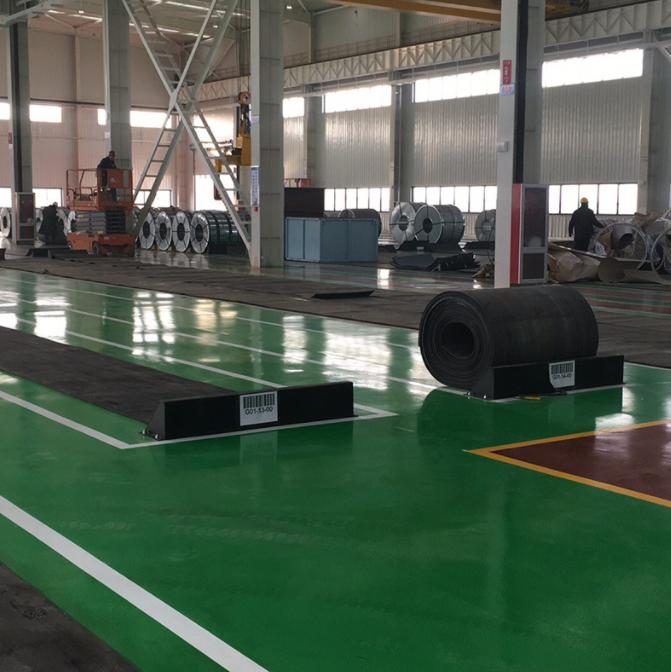
conveyor belts
Mechanical parameters of rubber conveyor belt
- Hardness: hardness is the ability of rubber to resist external force pressure, the world generally used two typical rubber hardness meter to measure hardness, one is Shao Er hardness meter; the other is the international rubber hardness meter, Shao A hardness meter, measured hardness value is very close to the international rubber hardness value;
- Abrasion: the surface is subjected to the action of friction and makes the rubber surface wear and fall off. There are many kinds of instruments used in the wear test, among which the following kinds are more important:
(1) The instrument is widely used in China, and only the UK has a standard abroad. In the national standard GB-82 implemented in 1982, the sample wear index was added to represent the content of rubber wear performance;
(2) Grassili grinding instrument the instrument is now only a few countries included in the national standards, the general division of constant load method and fixed torsion method two kinds;
(3) Shaopoper abrasive instrument is also known as DIN test instrument, the International Organization for Standardization has decided to recommend the use of Shaoper abrasive instrument test method as the international standard;
(4) Wear is mainly used to determine the kind of wear resistance of tread rubber, can also be used to identify soft rubber and other rubber materials, the characteristics of leather wear is using two have a specific shape and a certain degree of sharp tungsten carbide knife, under the action of fixed load, cut at a certain speed rotating rubber sample, determine the material grinding weight in the test time, leather wear can better reflect the tire in the road wear;
(5) MNP-1 abrasive meter This instrument is unique to the former Soviet Union, its characteristic is that it can widely change the test parameters, such as the load can be from 0.5N, the temperature is 40.130℃, the test range is relatively wide;
- Fatigue: fatigue test is to use the main conditions of rubber products in the use process of reproduction in the laboratory simulation, so as to quantitatively measure the fatigue resistance of the products, often characterized by fatigue life;
Fatigue test is generally divided into three categories according to the different forms of applied force:
(1) Compression fatigue test is to repeatedly compress the sample at a certain frequency and a certain deformation range, measure its temperature and deformation, the instrument has fixed deformation, fixed stress, fixed energy;
(2) Flexiure crack test measures the bending times of rubber caused by multiple bending, or measures the fracture expansion length of a certain bending times;
(3) Tensile fatigue test;
- Test of compression permanent deformation: the vulfide state of rubber can be judged by the compression permanent deformation, and understand the ability of products to resist static compression stress and shear stress. There are two measurement methods, namely constant compression permanent deformation and static compression deformation;
- Effective elasticity and lag loss test: effective elasticity is in the test machine will stretch sample to a certain length to measure the contraction of the recovery of the percentage of work consumption, lag loss is on the test machine measuring test elongation, contraction when the loss of work and elongation of the consumption of the percentage.
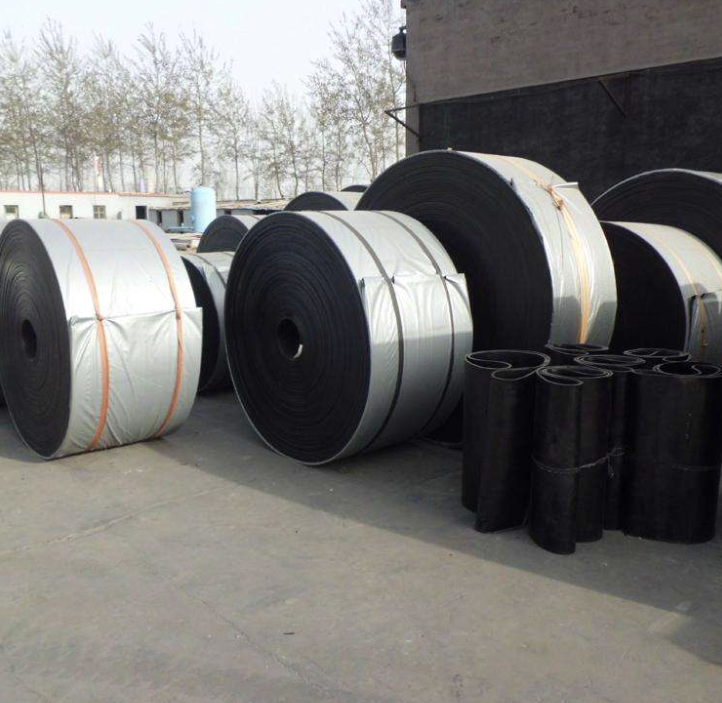
product property
- Physical and mechanical properties of the cover adhesive:
Overlay performance level tensile strength ≥ Pull the elongation rate oneself abrasion loss ≤ Mpa % mm3 H 24.0 450 120 D 18.0 400 100 L 15.0 350 2002. Full-thickness tensile properties: - Full-thickness tensile properties: a. The longitudinal tensile strength of the belt shall not be less than the following nominal values: 160,200,250,315,400,500,600,630,800 N/mmb. The full thickness longitudinal pull elongation of the band shall not be less than 10%.The full thickness longitudinal reference force elongation of the belt shall not be greater than 4%.c. Straightness: not greater than 25mmd. Interlayer bonding strength:
The method of representation
The old specification representation method of the ordinary conveyor belt is expressed in five numbers: width (mm), number of skeleton layers, upper and lower cover tape thickness (mm) and length (m). For example, 500 * 5 * 3 * 2.5 * 100 indicates a conveyor belt of 500mm wide, 5 layers of tape, 3mm thick, 2.5mm thick and 100m long. General production of 500mm * 5P (3 + 2.5) * 100 representation. The new specification representation of the ordinary conveyor belt is indicated by the longitudinal full thickness tensile strength (kN/mm), indicating the common purpose letter G, band width (mm), the cover layer performance level code (L is light, H is heavy, M is ordinary type), and the upper and lower cover tape thickness (mm). For ring belt, including belt inner circumference (m). In addition, if necessary, there are also indicated that the content with the core material and the number of layers. Such as: the specification of 500GB800L3/1.5-30 (NN3) conveyor belt, indicating the longitudinal full thickness tensile strength of 500 kN/mm, general use, band width of 800mm, cover layer performance level is light, upper and lower cover glue thickness of 3mm and 1.5mm respectively. The tape is annular, 30m inner circumference, core is nylon and 3 layers of fabric.
Run off the problem
There are many reasons for misdeviation, which need to be dealt with according to different reasons.1. Adjust the position of the belt of the roller of the belt conveyor in the middle of the whole belt conveyor, and the mounting holes on both sides of the roller conveyor are processed for adjustment. The specific method is which side of the belt to bias, which side of the roll group toward the belt forward direction, or the other side to move back. If the belt runs up direction, the lower position of the roller set should move to the left, and the upper position of the roller set should move to the right.2. There are many types of centering roll set, such as intermediate rotary shaft, four connecting rod, vertical roller, etc., its principle is to use the block or roll in the horizontal direction rotation block or produce horizontal thrust so that the belt automatically centripetal to achieve the purpose of adjusting the belt deviation. Generally, this method is more reasonable to use when the total length of the belt conveyor is short or when the belt conveyor is two-way operation, the reason is that the shorter belt conveyor is easier to deviate and not easy to adjust. The long belt transport machine should preferably not use this method, because the use of the centering roll set will have a certain impact on the service life of the belt.3. The adjustment of the drive roller and the reversing roller is an important link in the running of the belt deviation adjustment. Because one belt conveyor has at least 2 to 5 rollers, the installation position of all rollers must be perpendicular to the center line of the length direction of the belt conveyor, and it will inevitably deviate if the deviation is too large. The adjustment method is similar to that of the adjustment roller group. For the head roller such as the belt to the right side of the roller, the right bearing seat should be moved forward, the belt to the left side of the roller, the left bearing seat should move forward, and the left bearing seat back or the right bearing seat can be moved back. The tail drum is adjusted in the opposite way of the head drum. Repeated adjustment until the belt is adjusted to an ideal position. It is best to install the roller accurately before adjusting the drive or orientation.4. Adjustment of the belt tension is a very important part of the deviation adjustment of the belt conveyor. At the upper roller, the two roller shall be perpendicular to the length of the belt, that is, to ensure the level of the axis centerline. When the screw tension or the hydraulic cylinder tension is used, the two bearing seats of the tension roller shall be simultaneously translated to ensure that the roller shaft line is vertical to the longitudinal direction of the belt. The specific adjustment method of belt deviation is similar to the adjustment at the roller.5. The impact of the material position at the reprint point on the belt material position at the reprint point has a very big impact on the deviation of the belt, especially when the two belt machines in the horizontal plane projection is vertical. The relative height of the two belts at the reprint point should usually be considered. The lower the relative height, the greater the horizontal velocity component of the material, the greater the lateral impact on the lower belt, and the more difficult for the material to be in the medium. Deflate the material on the belt cross section and eventually deviate the belt. If the material goes off to the right, the belt runs off to the left, and vice versa. The relative height of the two belt machines should be increased as much as possible during the design process. The form and size of the upper and lower funnels, guide grooves and other parts of the moving bulk material transport machinery should be more carefully considered. The width of the general guide tank should be about two-thirds of the width of the belt. To reduce or avoid belt deviation, increase the baffle plate to block the material and change the falling direction and position of the material. Six, two-way running belt conveyor deviation adjustment of two-way running belt conveyor belt deviation adjustment than one-way belt conveyor deviation adjustment is much more difficult, in the specific adjustment should first adjust a certain direction, and then adjust another direction. When adjusting, carefully observe the relationship between the belt movement direction and the deviation trend, and adjust it one by one. The emphasis should be placed on the adjustment of the drive roller and the redirection roller, followed by the adjustment of the roller roller and the adjustment of the material drop point. At the same time, it should be noted that the belt should make the force on the belt section length direction uniform in the sulfide joint, and the force on both sides should be as equal as possible when using the guide chain traction.
Maintenance introduction
Injury prevention
In the transportation and storage, the conveyor belt should be kept clean, to avoid direct sunlight, rain and snow immersion, to prevent contact with acid, alkali, oil, organic solvents and other substances that affect the quality of rubber, and 1 meter away from the heating device.2. During the storage time, the temperature in the storeroom should be kept at between-15℃ and + 40℃, and the relative humidity should be kept at between 50 and 80%.3. The conveyor belt shall be placed in volume and shall not be folded. It shall be turned once a quarter during the storage period.4. The running speed of the conveyor belt should not be greater than 5.0 m / s, and the low speed should be used for the materials with large transportation mass and large wear-tear ability and the fixed plow unloading device as far as possible. The specified speed can affect the service life of the tape.5. The relationship between the diameter of the transmission roller of the conveyor and the conveyor belt cloth layer, the supporting matching of the transmission roller to the roller and the requirements for the roller groove corner shall be reasonably selected according to the design regulations of the conveyor.6. In order to reduce the impact and wear of the material on the tape, the feed direction shall follow the running direction of the tape; the material drop to the tape shall be minimized; the feed port shall be avoided directly above the roller or the roller; the belt receiving section shall shorten the roller distance and buffer measures shall be taken. In order to prevent scraping tape, the contact part of the retaining device scraper cleaning device and unloading device and tape shall use rubber plate with suitable hardness, do not use tape head with cloth layer.7. The conveyor belt should be paid attention to the following matters during the use: A. Avoid the roller being covered by the material, resulting in poor rotation, prevent the leakage of material stuck between the drum and the tape, pay attention to the lubrication of the active part, but not the oil conveyor belt. B. Strive to avoid starting with load. C. If the tape deviates, measures shall be taken to correct it in time. D. Local damage found should be repaired in time to avoid expansion. E. Avoid tape block from rack, support or block material to prevent breaking and cracking.
Cause of ⒈ overlying adhesive surface damage
The ⑴ conveyor belt has a poor quality. In the manufacturing process, the conveyor belt is due to the insufficient adhesive force, the defects in the process or the lax control of a manufacturing process, the conveyor belt operation with the roller, the friction force, the conveying material, the friction reaction force makes the cover glue gradually peel, in serious cases, with the face of the cover glue tear.
⑵ conveyor belt surface in contact with high temperature materials. When the conveyor belt delivers the dirty slag coal in the boiler room, the high temperature dirty slag coal that has not cooled thoroughly makes the conveyor belt cover tape melt, aggravating the abnormal wear of the belt surface. In addition, the sparks and slag generated by electric welding and gas cutting operations can also cause damage to the surface cover glue.
The ⑶ conveyor belt suffers from a great impact. The design drop of the coal funnel is too large, the guidance of coal flow is not reasonable, and the existence of many large materials in the system can greatly impact the conveyor belt, and form more pits in the belt surface.
Longitudinal tear of ⒉
⑴ conveyor belt life reasons. Poor preservation of the conveyor belt, sun exposure, rain and chronic operation flooding will rust the main core preparation layer and traction wire rope; the chronic use of the joint fatigue and wire breaking will cause longitudinal tearing in the operation of the tape machine.
⑵ transports bulk material. Illegal use of tape machine to transport large pieces, long materials, transportation because of the material accident stuck, through the tape caused by longitudinal tear.
The ⑶ system enters iron or hard gangue. Unloading reprint point is an essential link in the transportation of tape. When the transportation system enters the long iron device or hard piece of gangue, and in the reprint of falling impact through the tape or stuck wear tape, cause tear tape.
⑷ conveyor belt deviation. Tape conveyor debugging and maintenance is not good, the conveyor belt greatly run off, encountered a roll, hanging card, and then tear belt accident.
⑸ small pieces of hard material stuck in the belt surface and guide tank or sweeper, gradually grinding through the conveyor belt resulting in the tear belt.
⒊ transverse failure
The ⑴ conveyor belt joints are of poor quality. The quality of the sulfide joint of the conveyor belt is poor, and the long-term flooding of the metal card joint causes the corrosion of the piercing wire rope or the corrosion of the preparation belt core, which will cause the belt breaking accident during the normal load operation.
The ⑵ conveyor belt encounters large stuck resistance. The conveyor belt packing accumulation, bulk gangue or coal stuck in the funnel guide tank or roller and tape, the belt machine is not rotating roller or the bottom belt accumulation of more materials, after the contraction of the belt is not reset, so that the tape machine to bear great resistance during operation, causing lateral fracture of the tape.
preventive measure
⑴ selects tape manufacturers with sound qualification, complete system and good reputation to eliminate the potential risks caused by the quality of tape itself.
The design of ⑵ tape feeding and reprint point funnel should be reasonable. We should not only avoid the formation of too high drop, but also change the direction of the coal flow, so that the coal flow and the basic direction of the tape machine transportation are consistent.
⑶ is forbidden to transport large bulk objects and any iron devices, and to ensure the temperature of qualified materials to avoid the damage, peeling and falling off of the surface cover tape.
⑷ controls the entry of iron ware and hard strip gangue from the source of the transportation system, and sets up the necessary crusher and iron remover along the transportation system.
⑸ conveyor belt inventory storage to avoid the sun and rain, for the long-term storage of the conveyor belt, it is necessary to carry out the longitudinal tension strength test.
⑹ For the guide tank, sweeper and other accessory facilities of the conveyor belt, we need to carry out careful daily maintenance, and we need to timely repair or replace them if the gap is increased or damaged.
⑺ drum should be periodic flaw inspection, as soon as possible to find cracks, local wear and other hidden dangers.
Damage repair
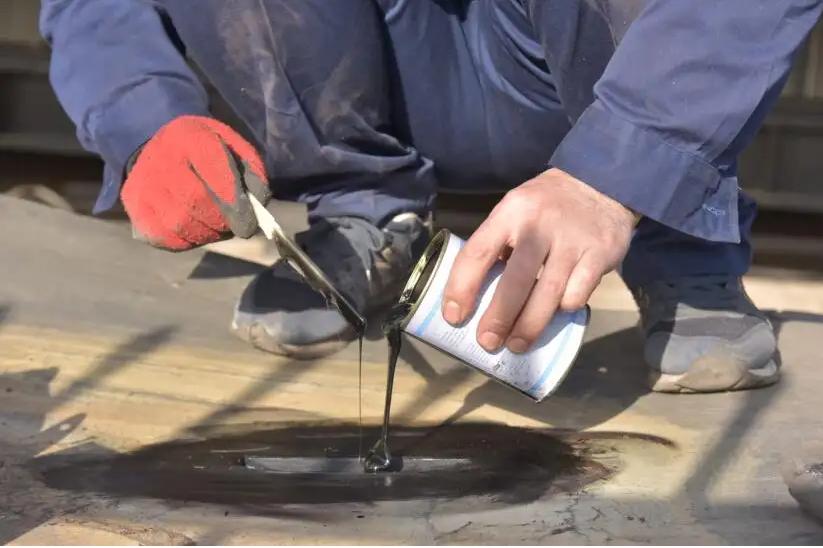
rubber conveyor belt maintance
In the use of conveyor belt, damage is inevitable, there are many forms of damage, such as: edge stratification, ulceration, defect and cracking; long distance longitudinal tear, deep scratches, holes, large wear, cover drum or peeling, joint internal defects, etc. Among them, longitudinal tear is the most urgent, edge damage is the most common, the internal defects of the joint are difficult to avoid, and the service life after repair is the most concerned.
There are mainly three main commonly used repair methods for conveyor belt
⒈ thermal repair method: usually using special repair device, vulcanmachine and conveyor belt suitable thermal sulfide material, the damage part of the conveyor belt equal strength “no trace” repair. This repair can make the conveyor belt completely eliminate the damage and restore the original state. Suitable for more important, long distance, high speed operation, large volume of transportation system. Of course, specialized equipment and professionals are required to complete such maintenance. It is the most reliable and ideal method for conveyor belt maintenance.
⒉ cold repair method: usually must use the conveyor belt special cold adhesive and special repair film and special tools, to fill and repair the damaged parts of the conveyor belt, in order to achieve the purpose of continuous operation. Obviously, this filling repair is expedient. Therefore, its main use is: in the conveyor belt damage, timely cold repair, can prevent the damage part of the conveyor belt to continue to expand, extend, so as to effectively protect the core of the conveyor belt from damage, so as to wait, obtain the time and opportunity needed for maintenance.
⒊ mechanical repair method: usually made of metal material clips, nails, panels and screws or metal hose and special appliances, to fix or connect the damaged parts of the conveyor belt, in order to achieve the purpose of maintaining operation. Even in many times, on many occasions today, this seemingly simple, rough, and even ugly treatment method, but can play an emergency function and get twice the result with half the effort.
To sum up: the most ideal and perfect repair of the conveyor belt must be strictly in accordance with the principle of “equal strength and the same life”, that is, using thermal repair technology and technology can be achieved. The real purpose of other applications of repair technology is to obtain the right repair time and opportunities. Therefore, cold repair and mechanical repair must not be used as the final treatment of conveyor belt damage. Only for convenience, simple, the pursuit of low cost, short time, the result is most likely to be endless problems. We hope that every conveyor belt system management and maintenance staff, must have a clear understanding of and thoroughly understand the basic concept of conveyor belt repair, and successfully and smoothly complete the conveyor belt bonding and maintenance work.
Cold seamless connection
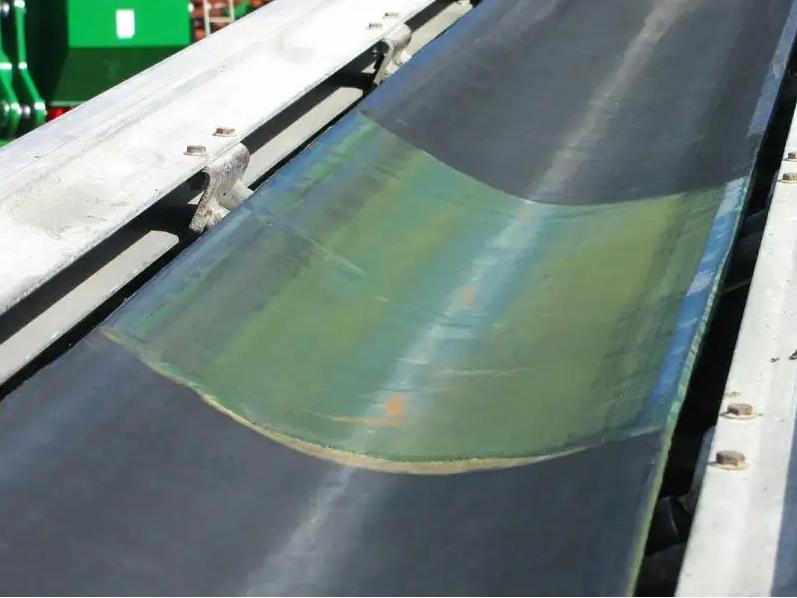
conveyor belt supplier
Rubber conveyor belt is divided into multi-layer, steel wire, pvc and other types, while the cold seamless connection of rubber conveyor belt is only suitable for multi-layer and less length change of fixed rubber conveyor belt
The conveyor belt is not suitable for the connection of the telescopic rubber conveyor belt in the mining industry working face. This cold seamless connection technology of the multilayer rubber conveyor belt is summed up after the long-term practice of TIP TOR company in Germany.
1 Cold and seamless connection of the multi-layer rubber conveyor belt
The schematic diagram of the multilayer rubber conveyor belt lap is shown in Figure 1.
Figure 1 lap schematic diagram
1.1 Determination of the connection length
Multi-layer rubber conveying rubber belt according to the use of different, the choice of different layers, if the lap length is long, a waste of material, and the lap part is short will be
The accident of tearing or breaking of the conveyor belt caused by the lack of bearing capacity. The lap length of the multilayer rubber conveyor belt is related to the strength of the selected conveyor belt,
The calculation formula is as follows:
(1)1! Additional lap dimensions (joint length) are shown in Table 1.
(2) Width of the adhesive tape!0.3 (about 16 “).
For example, delivery tape width of 1000mm rated strength 630 / 4750mm (lap, see table) + 300mm (oblique cut) =105 (0 required tape length) as shown in Figure 2.
FIG. 2 Cut a CB baseline of 90 ” at the tape end of the first woven layer of 30mm (see Figure 2) according to the tape width!0.3= About 16 ” oblique tangent.
Table 1 Reference value for cold seamless connection of multilayer rubber delivery tape This size is measured and crossed only at one end of the tape. Sometimes we need to cut off the middle part of the multi-layer conveyor belt and then connect it up.
1.2 Replace a piece of damaged adhesive tape
(1) Release the tape on the conveyor and pull the tape together with the tightening device. Mark the middle of the two tension devices and cut the tape.
(2) Cut the replaced tape section parallel to the oblique edge (tape on the shelf in advance).
(3) Calculate the lap length. Lenglength of front and back connections (see table above)!2 + Length of the replaced tape segment + tape width!0.3 Slent section.
1.3 If the tape extension length is shorter than the tape width
(1) After releasing the tape tension, pull together with the tension device. Mark the tangent in the middle of the two tension devices and cut the tape.
(2) Determine the excess part of + 1 times the connection length.
Rubber characteristics
Ding Fine rubber NBR has good mechanical properties, resistance to mineral oil, hot water, ozone, A, B, C, butane, etc. -40~120 to make O-ring, oil sealing skin bowl and other common in the general hydraulic start system for static sealing or dynamic sealing.
Use high temperature, steam resistance, weak acid, no mineral oil brake oil-40~160 for high temperature gas seal up to (200 degrees)
Fluorine rubber FKM heat resistance, acid and alkali resistance, chemical resistance, resistance to various mineral oil, extrusion resistance, aging resistance-40~220 is generally used in harsh environment, such as: metallurgical industry, large construction machinery static sealing.
Polamine TPU is an oil-resistant, hydrolysis-resistant, non-toxic and high wear-resistant material.-40~100 For the shaft use, hole use in the cylinder, GY type sealing ring and FS for dust protection, etc.
Good oil resistance, wear resistance, high compressive strength, good impact resistance, good self-lubrication, stable size.-30~140 Make the guide slip ring, retaining ring, support ring, etc
Good chemical stability, high resistance, low temperature and various media, low coefficient of friction, self-lubrication.-260~260 Commonly used sealing materials on machinery, making wear-resistant rings, guide rings, used for metallurgy, practical and chemical, construction machinery, etc.
nylon 1010, nylon 66 oil cast nylon chemical properties good mechanical properties, can replace some metal mechanical products.-10~200 For machinery manufacturing, petroleum, chemical, textile, printing and dyeing, paper making, steel industry.
Silica rubber MVQ heat resistance, cold resistance, permanent compression, small deformation, but low mechanical strength.-60~230 Suitable for high, low temperature, not high speed rotation and all kinds of food machinery sealing.
A high-performance engineering plastic with good high-strength insulation of-40~260 is used for oil, oil well testing, power electronics and high insulation parts.
Rubber conveyor belt is more commonly used in conveying equipment, but do you know it? Proper sulcanization of rubber can maintain the high elasticity of rubber and make the rubber have a certain strength. At the same time, in order to increase the hardness, strength, wear resistance and tear resistance of the products, inert fillers (such as zinc oxide, clay, chalk, barite, etc.) and enhanced fillers (such as carbon black) are added to improve the quality of the conveyor belt. Let’s introduce a few kinds below!
Cistin rubber: a high cis-butadiene polymer elastomer obtained by coordination-polymerization; cis-1,4 content is 96~98%, which belongs to high cis-butadiene rubber. Its molecular structure is relatively neat, no substituent on the backbone, small intermolecular force, molecular length and thin, and a large number of internal rotating C-C single bonds, making the molecule very “soft”.
styrene butadiene rubber: is made of 1,3-butadiene and styrene and polymer, varieties: low temperature styrene rubber, high temperature butadiene rubber carbon black rubber, high styrene, liquid styrene rubber, structure: unsaturated olefin high polymer, glass temperature depends on the content of styrene homopolymer, advantages: wear resistance, heat resistance, oil resistance and aging resistance are better than natural rubber.
Neoprene is a polymer elastomer formed by polymerization of 2-chlorine-1-butadiene (short-3-butadiene), is one of the main varieties of synthetic rubber rubber conveyor belt, as a generic special rubber, besides a general good physical properties, also has weather resistance, flame resistance, oil resistance, chemical corrosion resistance and other excellent characteristics, making it occupies a special position in the synthetic rubber.
Ioprene rubber: Polyshun 1,4-isoprene elastomer obtained by using isoprene as a monomer, also known as “synthetic natural rubber”. It is the world’s last butadiene and butadiene and the third synthetic rubber.

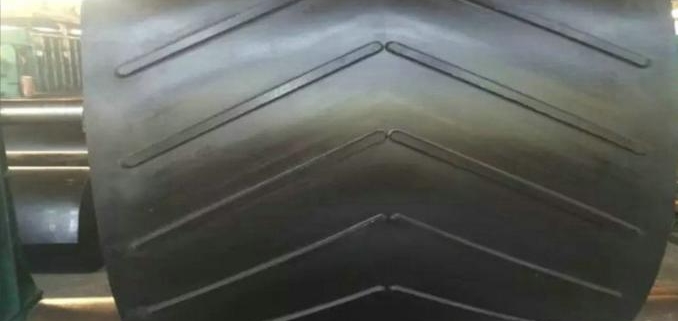
Leave a Reply
Want to join the discussion?Feel free to contribute!